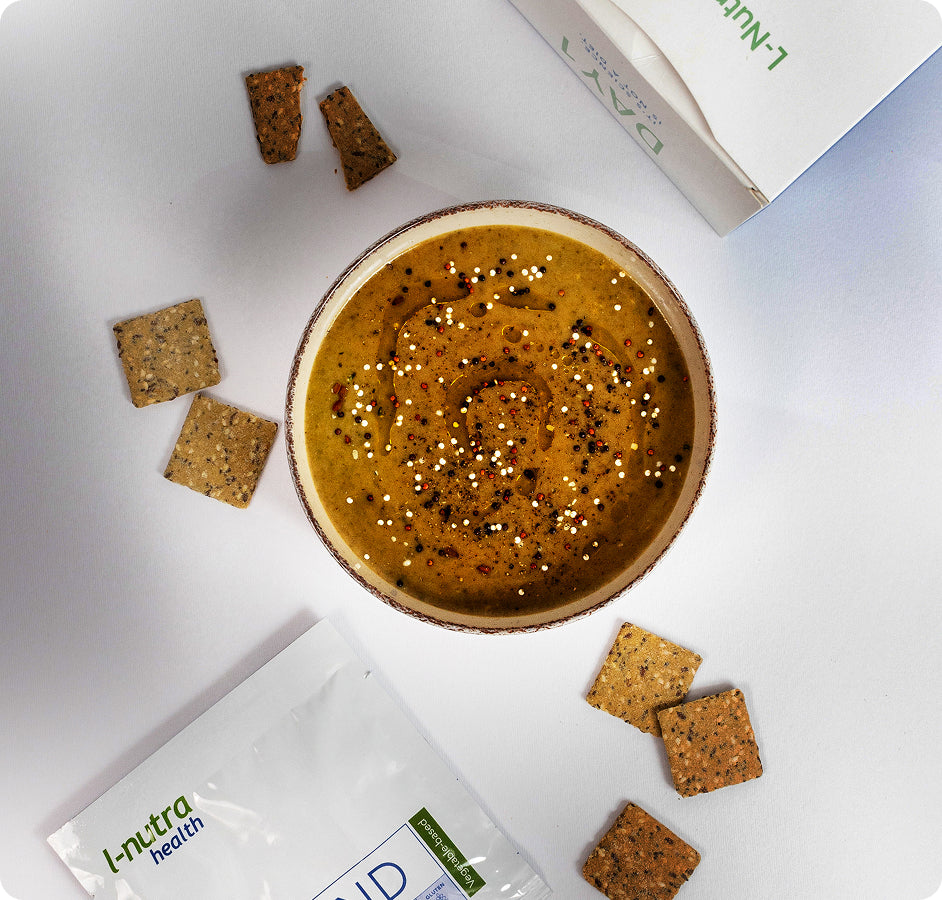We talk a lot about Nutrient Sensing Pathways (NSPs), and with good reason. NSPs are essential in how the body responds to nutrients, triggering reactions that regulate energy use, metabolism, and cell repair. When these pathways detect nutrients, they signal the body to activate or deactivate functions, optimizing nutrient use and distribution.
While activation of NSPs are beneficial during periods of growth (like when we are growing in adolescence, for instance), over activation of NSPs when excess/rapid growth is not required (e.g. ages 18-65), can accelerate the aging process. As such, regulation and balance of NSP activation is essential for optimal health throughout adult life, and as we age.
During fasting, the body downregulates the stimulation of these sensors in order to minimize growth activity and conserve energy, reserving it for stress resistance, cleanup, and optimization. At Prolon, our fasting mimicking products were formulated to avoid triggering these pathways, making it possible for the body to stay in a fasting state, even while eating.
The three nutrient-sensing pathways that Prolon tracks most closely are IGF-1 (Insulin-like Growth Factor 1), mTOR (Mechanistic Target of Rapamycin), and PKA (Protein Kinase A). IGF-1 and mTOR pathways play key roles in cellular growth, aging, and metabolism, and are activated primarily by amino acids and glucose. Read on to learn more about PKA.
The PKA Pathway: How it Works
PKA is an enzyme that regulates metabolism and cell growth, primarily activated by nutrients such as sugars, simple carbohydrates, and possibly caffeine. When these nutrients are detected by receptors on the cell surface, a chain reaction occurs, leading to the conversion of energy molecules into cAMP, which then activates PKA. This enzyme modifies target proteins to regulate various metabolic processes within the cell.
(For a comprehensive view of the cAMP/PKA signaling pathway, refer to this detailed diagram: Genome Pathway and this visual graphic: BioRender (Abbas et al., Cell Mol Imm, 2015).)
PKA and Glucose
Research using yeast as a model organism has shown that PKA activity is high in the presence of glucose (sugar). However, when glucose is scarce, PKA targets are suppressed, highlighting the role of this pathway in nutrient sensing. Interestingly, PKA pathways work the same way in many different species, from simple organisms like yeast to more complex ones like flies, mice, and humans.
How PKA Affects Your Body
-
Role in Metabolism: PKA plays a significant role in regulating metabolism, particularly in how our bodies use stored and consumed energy. The cAMP/PKA signaling pathway influences the secretion of insulin and glucagon, glucose uptake, glycogen metabolism, and gluconeogenesis; due to its central role in metabolism, drugs that target the cAMP pathway, upstream of PKA, are used in the treatment of type 2 diabetes and other metabolic disorders.
-
Impact on Aging and Disease: Reduced PKA activity, such as seen during fasting, has been linked to extended lifespan and resistance to age-related conditions in mice.*
- Autophagy and PKA: During periods of nutrient scarcity, PKA engages in autophagy, a process that helps clear damaged cells and regenerate new ones.
How To Limit PKA Activation
Low PKA levels have been associated with several health benefits, including weight loss, improved cardiovascular health, and increased lifespan.* Steps to avoid activating it include:
-
Minimize simple sugars in the diet: Research shows that PKA activity increases in the presence of simple sugars, such as glucose.
-
Practice periodic prolonged fasting (such as the FMD): This promotes cellular clean-up and regeneration, in part by staying below PKA sensors, and is associated with numerous benefits including weight loss, cardiovascular health, and increased lifespan.
-
Limit caffeine: Limited data suggests that caffeine may stimulate the PKA pathway; due to this preclinical work, we recommend that while following the 5-day FMD, individuals limit their caffeine consumption to under 140 mg per day as a precaution.
The PKA pathway is crucial in how our bodies respond to sugars and carbohydrates, impacting metabolism and aging. Prolon’s products such as the 5-Day FMD, Fasting Bars and Fasting Shakes, and our plant-based protein powder, L-Protein can help modulate PKA activity by staying under such Nutrient Sensing Pathways
*https://www.aging-us.com/article/100138/text
https://pubmed.ncbi.nlm.nih.gov/20448293/
References
- Efeyan, A., Comb, W. & Sabatini, D. Nutrient-sensing mechanisms and pathways. Nature 517, 302–310 (2015). DOI: 10.1038/nature14190
- Conrad, M., Schothorst, J., Kankipati, H. N., Van Zeebroeck, G., Rubio-Texeira, M., & Thevelein, J. M. (2014). Nutrient sensing and signaling in the yeast Saccharomyces cerevisiae. FEMS Microbiology Reviews, 38(2), 254–299. DOI: 10.1111/1574-6976.12065
- Enns, L., Pettan-Brewer, C., & Ladiges, W. (2010). Protein kinase A is a target for aging and the aging heart. Aging, 2(4), 238-243. DOI: 10.18632/aging.100138
- Cheng CW, Adams GB, Perin L, et al. (2014). Prolonged fasting reduces IGF-1/PKA to promote hematopoietic-stem-cell-based regeneration and reverse immunosuppression. Cell Stem Cell, 14(6), 810-823. DOI: 10.1016/j.stem.2014.04.014
- Wang Y, Liu Q, Kang SG, Huang K, Tong T. (2021). Dietary Bioactive Ingredients Modulating the cAMP Signaling in Diabetes Treatment. Nutrients, 13(9), 3038. DOI: 10.3390/nu13093038
- Kunkel, J., Luo, X. & Capaldi, A.P. (2019). Integrated TORC1 and PKA signaling control the temporal activation of glucose-induced gene expression in yeast. Nat Commun, 10, 3558. DOI: 10.1038/s41467-019-11540-y
- Jeon, SM. Regulation and function of AMPK in physiology and diseases. Exp Mol Med 48, e245 (2016). DOI: 10.1038/emm.2016.81














































